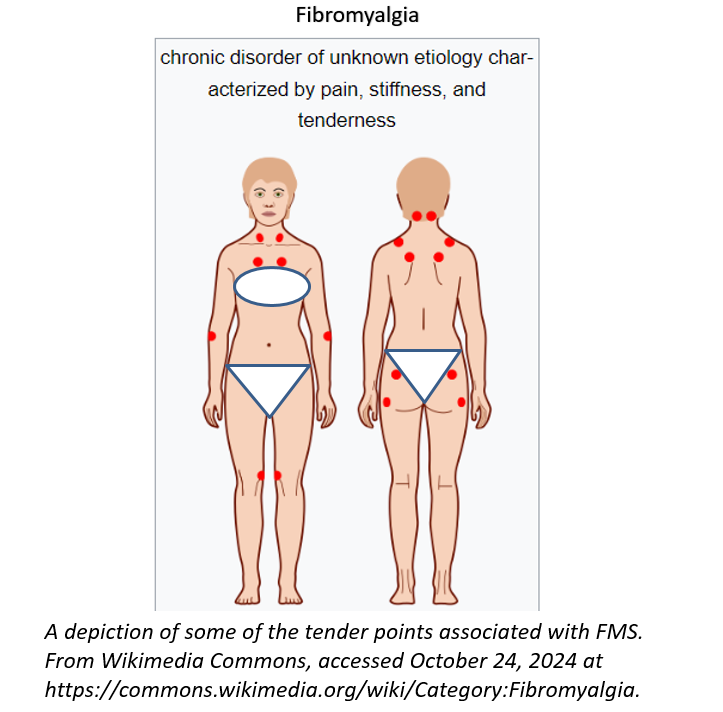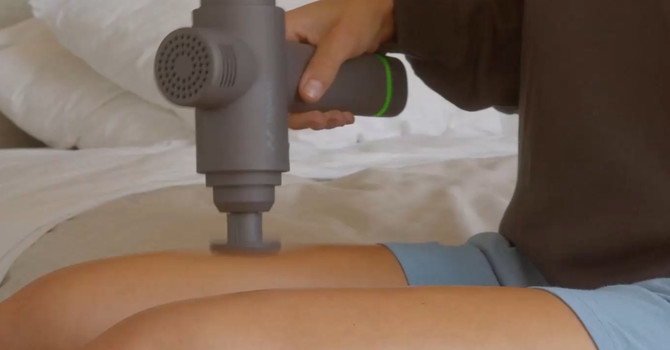There is no other diagnosis that I know of that can be so perfectly explained by fascial issues. Take a look at this:

The similarities are undeniably striking. Some assert that Fibromyalgia Syndrome (FMS) is not a “real” diagnosis, which can understandably incite frustration from one suffering such symptoms. This lack of acceptance as a bonafide diagnosis stems from several factors. First, over the years the literature has shown that these symptoms dwelt under many different names: muscular rheumatism (1592), fibrositis (1904), myofascitis (1927), myofascial pain syndrome (1952), and finally fibromyalgia (1976). Such name-hopping can obscure study of a diagnosis and also diminish credibility. Secondly, the diagnostic criteria (the symptoms that need to be present to confirm a diagnosis) have never been very solid. To address this issue and promote research on FMS, the American College of Rheumatology (ACR) published a paper in 1990 proposing two criteria required to render a FMS diagnosis: widespread pain and tenderness at 11 out of 18 specified points. They proposed this largely so that subjects for research could be better identified; it was never their intent that these criteria be used in the clinic, but that didn’t stop it from happening. Over the years there was much debate over how many points needed to be present to confirm the diagnosis. The controversy persisted, driving the ACR to publish a second paper in 2010 proposing to remove the presence of tender points from the criteria. That left widespread pain as the only symptom necessary to render a diagnosis of FMS. No wonder people questioned its legitimacy.

Call it what you want, I will attest to the fact that these symptoms are NOT imaginary.
I speak from my own experience with pain and dysfunction – heck, in 1974 when I was 12 years old I was diagnosed with Juvenile Rheumatoid Arthritis and missed attending school for 8th grade. Just think: if this would have happened two years later I might have been diagnosed with FMS! I also speak from 40+ years of clinical practice working with people harboring FMS/fascial dysfunction. The good news is it can absolutely be helped. I am walking, living proof of that. As with most conditions, there are multiple factors that need to be considered and addressed as needed: past trauma, nutrition, daily activities, hormones, movement patterns, emotional state, hyper/hypomobility, and pathology are examples. Many of these factors can be improved/resolved with attention to the fascia, and my go-to is using the Fascial Manipulation®-Stecco method (FM). The holistic, total-body nature of FM perfectly suits the all-over patterns of FMS. Restoration of lost slide between fascial layers helps to abolish pain/stiffness and restore mobility and function - without medications, tests, or surgery. Interestingly, many of the tender points attributed to FMS are also access points in the FM model.
Frustrated with stiffness and pain by any name, or looking for alternatives to medications, testing, and surgery? Give me a call to discuss your situation, or go to my website and schedule an in-person or virtual session. You have options – act on them!
“The doctor of the future will give no medicine, but will interest his patients in the care of the human frame, in diet, and in the cause and prevention of disease.” Thomas Edison 1847-1931
References:
1. Wolfe, F., Smythe, H. A., Yunus, M. B., Bennett, R. M., Bombardier, C., Goldenberg, D. L.,& Sheon, R. P. (1990). The American College of Rheumatology 1990 criteria for the classification of fibromyalgia. Arthritis & Rheumatism: Official Journal of the American College of Rheumatology, 33(2), 160-172.
2. Wolfe, F., Clauw, D. J., Fitzcharles, M. A., Goldenberg, D. L., Katz, R. S., Mease, P., & Yunus, M. B. (2010). The American College of Rheumatology preliminary diagnostic criteria for fibromyalgia and measurement of symptom severity. Arthritis care & research, 62(5), 600-610.
3. Liptan, G. L. (2010). Fascia: A missing link in our understanding of the pathology of fibromyalgia. Journal of bodywork and movement therapies, 14(1), 3-12.
4. Day, J. A., Copetti, L., & Rucli, G. (2012). From clinical experience to a model for the human fascial system. Journal of bodywork and movement therapies, 16(3), 372-380.





